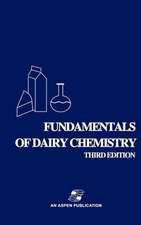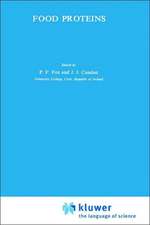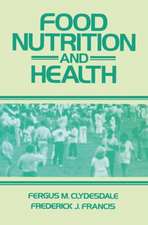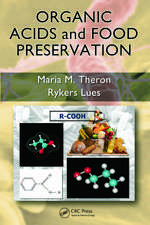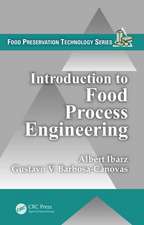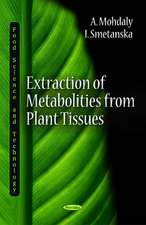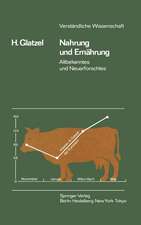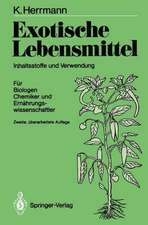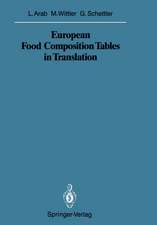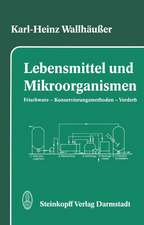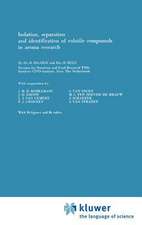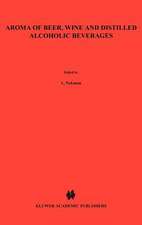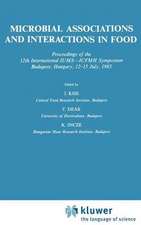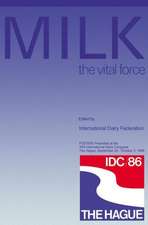The Produce Contamination Problem: Causes and Solutions
Editat de Karl Matthewsen Limba Engleză Hardback – 28 apr 2014
These critical, problem-oriented chapters have been written by researchers active in the areas of food safety and microbial contamination during production, harvesting, packing and fresh-cut processing of horticultural crops, and were designed to provide methods of contamination avoidance. Coverage includes policy and practices in the United States, Mexico and Central America, Europe, and Japan.
- Addresses food-borne contaminations from a prevention view, providing proactive solutions to the problems
- Covers core sources of contamination and methods for identifying those sources
- Includes best practice and regulatory information
Preț: 620.92 lei
Preț vechi: 859.15 lei
-28% Nou
Puncte Express: 931
Preț estimativ în valută:
118.81€ • 124.38$ • 98.31£
118.81€ • 124.38$ • 98.31£
Carte tipărită la comandă
Livrare economică 31 martie-14 aprilie
Preluare comenzi: 021 569.72.76
Specificații
ISBN-13: 9780124046115
ISBN-10: 0124046118
Pagini: 492
Dimensiuni: 191 x 235 x 31 mm
Greutate: 1.18 kg
Ediția:2. Auflage.
Editura: ELSEVIER SCIENCE
ISBN-10: 0124046118
Pagini: 492
Dimensiuni: 191 x 235 x 31 mm
Greutate: 1.18 kg
Ediția:2. Auflage.
Editura: ELSEVIER SCIENCE
Public țintă
This book will be useful to growers, packers and fresh-cut processors and their trade associations and suppliers, especially those impacted by outbreaks of food-borne illness. Also a valuable source of information to researchers at universities and government agencies who are investigating means of avoiding contamination and improving the microbiological safety of fresh produce.Cuprins
Part 1: Produce Contamination: Scope and Sources
1. Scope of the Produce Contamination Problem
2. Microbial Attachment and Persistence on Plants
3. Identification of the Source of Contamination
4. Manure Management
5. Bioaerosol Contamination of Produce: Potential Issues from an Unexplored Contaminant Route
6. Water Quality
7. Disease Risks Posed by Wild Birds Associated with Agricultural Landscapes
8. Produce Contamination by other Wildlife
Part 2: Commodities Associated with Major Outbreaks and Recalls
9. Leafy Vegetables
10. Melons
11. Microbiological Safety of Sprouted Seeds: Interventions and Regulations
12. Salmonella and Tomatoes
13. Tree Fruits and Nuts: Outbreaks, Contamination Sources, Prevention and Remediation
14. Berry Contamination: Outbreaks and Contamination Issues
Part 3: Contamination Avoidance Pre and Postharvest
15. Produce Contamination Issues in Mexico and Central America
16. Regulatory issues in Europe Regarding Fresh Fruit and Vegetable Safety
Part 4: Technology for Reduction of Human Pathogens in Fresh Produce
17. Disinfection of Contaminated Produce with Conventional Washing and Sanitizing Technology
18. Advanced Technologies for Detection and Elimination of Bacterial Pathogens
19. Conclusions and Recommendations
1. Scope of the Produce Contamination Problem
2. Microbial Attachment and Persistence on Plants
3. Identification of the Source of Contamination
4. Manure Management
5. Bioaerosol Contamination of Produce: Potential Issues from an Unexplored Contaminant Route
6. Water Quality
7. Disease Risks Posed by Wild Birds Associated with Agricultural Landscapes
8. Produce Contamination by other Wildlife
Part 2: Commodities Associated with Major Outbreaks and Recalls
9. Leafy Vegetables
10. Melons
11. Microbiological Safety of Sprouted Seeds: Interventions and Regulations
12. Salmonella and Tomatoes
13. Tree Fruits and Nuts: Outbreaks, Contamination Sources, Prevention and Remediation
14. Berry Contamination: Outbreaks and Contamination Issues
Part 3: Contamination Avoidance Pre and Postharvest
15. Produce Contamination Issues in Mexico and Central America
16. Regulatory issues in Europe Regarding Fresh Fruit and Vegetable Safety
Part 4: Technology for Reduction of Human Pathogens in Fresh Produce
17. Disinfection of Contaminated Produce with Conventional Washing and Sanitizing Technology
18. Advanced Technologies for Detection and Elimination of Bacterial Pathogens
19. Conclusions and Recommendations
Recenzii
"...useful to growers, packers, fresh-cut processers and their suppliers, especially those organisations impacted by outbreaks of foodborne illness." --FST Magazine, November 2014



